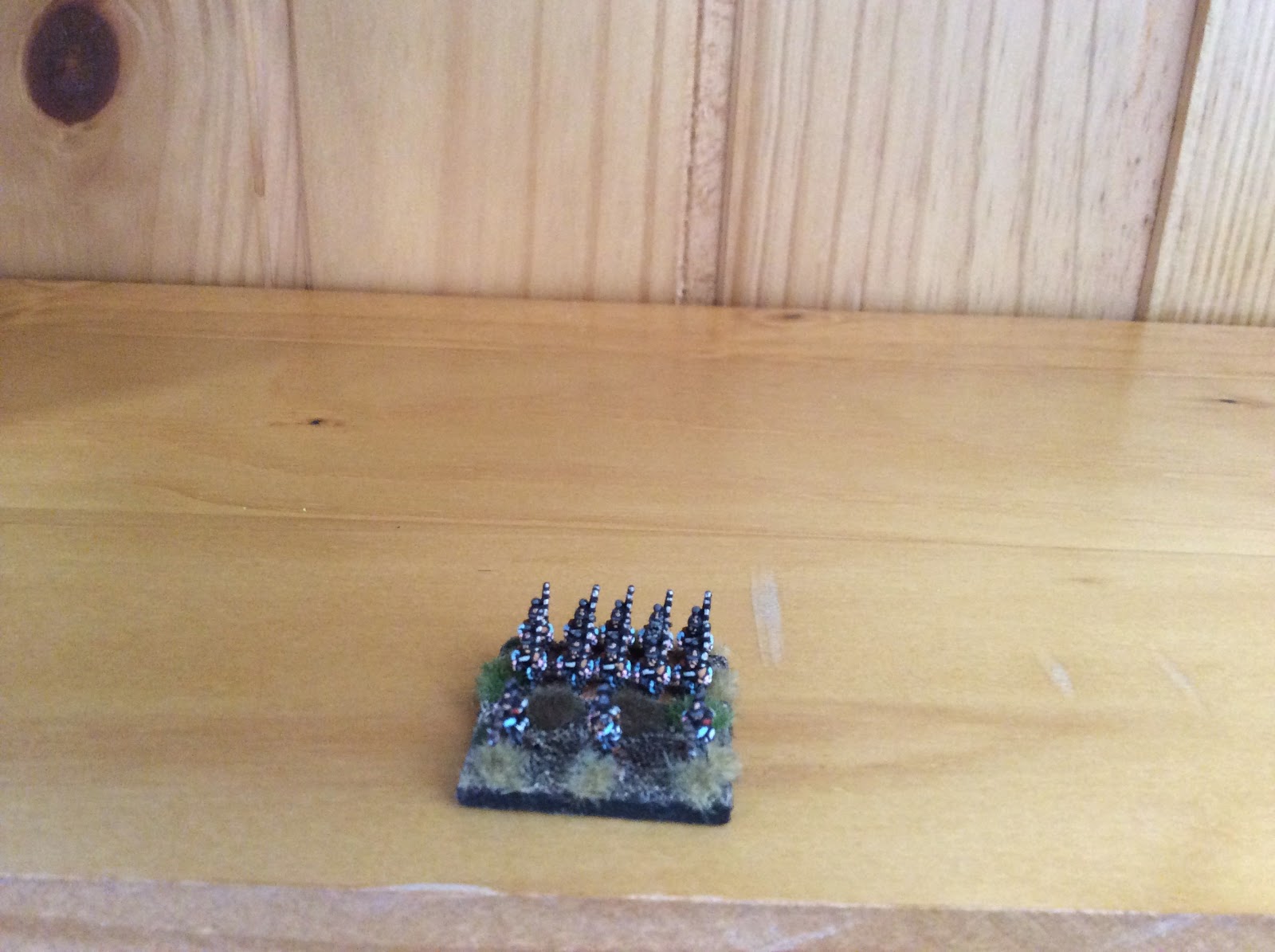So I left it part 1 with the various rule sets I had collected, a brief summary of each of these, but, each recommending various basing conventions.
Also, as previously mentioned I had a nightmare deciding on exactly how to base my miniatures and what that base would represent.
I therefore experimented... A lot.
It has taken me a long time to finally rest on a basing convention since buying the Baccus FPW figures. Too long, which has meant I haven't actually gamed the FPW with my own figures as yet which is frustrating.
But I have, this morning, ordered a load of laser cut 2mm MDF bases from East Riding Miniatures.
I will explain what I have ordered (base sizes) shortly and how and why I came to this conclusion. But, first, I wanted to show you the experiments, so without further ado, actual photos of miniatures;
First off we have the recommended Volley & Bayonet 3 inch by 3 inch base:
The Prussians
And the French
The artillery bases for V&B are 1 1/2 inch by 3 inch as below:
Prussian battery
I hasten to mention I initially went with the Baccus recommended 60mm by 30mm but I don't have any photos of these. I then re-based these for V&B. this was my first change of heart.
Then I had my second change of heart on thought to use 30mm by 30mm for all (apart from limbers) as you will see below:
A Bavarian 30mm by 30mm infantry base
Two French batteries on 30mm by 30mm bases
Then I had my 3rd change of heart and thought about using the V&B artillery bases as the bases for all:
A Prussian Jaeger battalion skirmishing on the edge of some woods
So my advice to anyone getting started in miniature war games or just starting a new project, read as much as you can about the period, buy several rule sets and give them a good read over. Think about and decide upon, how you would like your battles to look, and what level of manoeuvre element you want to represent on a base.
Once you have decided a rule set and level of play, the rule set will offer up its own basing recommendation though you don't, by any means have to adopt. However, my advice is, if you want to be gaming as soon as possible, just go with what your favourite rule set says, every time. It makes things easier, and don't try to over think it!
Then and only then should you buy figures, bases, flags etc. this will make things soo much easier and save time and money and too many wargames projects going on the back burner!
After doing all this reading, with the figures laying idly in a box file, I decided on how I want my games to look and what I wanted to represent on the wargames table.
Firstly, I wanted to be able to play games at the grand tactical level. Secondly I wanted to be able to represent the French Imperial phase in August 1870 and campaign this first phase of the war. Thirdly, I had decided that 1 base should represent a battalion. This made most sense to me in respect of wanting to play at the grand tactical level but also offered flexibility for lower level scenarios and games. That is why I decided against Volley & Bayonet in the end. I didn't feel the regimental bases offered as much flexibility.
So what did I decide upon I hear you ask!?
Well, I was saved by Zouave II by Bob Jones. This one of the last rule sets I read, and in it, the rules recommended a 2 inch by 1 inch basing system for infantry and artillery, and 1inch hex for artillery.
I didn't go with V&B basing as the bases and my idiocy allowed the bases to absorb too many figures. The 60mm by 30mm basing recommended by Baccus felt too clumsy - it just didn't feel right. The 30mm by 30mm bases felt too square, I'm not a fan of purely square bases, and just a bit too small. The 3inch by 1 1/2 inch bases that the Jaegers are on felt too large a frontage still, too rectangular if that makes sense.
So I gave the 2 inch by 1 inch a go and, like Goldilocks, it felt just right.
I have now received my large order of bases on this theme. Bob Jones also suggests using different shapes to represent different troop types. So infantry are on 2 inch by 1 inch tablets, limbers on same size but oval, artillery on 1 inch hexes, cavalry on same size rectangles and skirmishers ( Chasseurs a pied and Jaegers) on same size pill bases. All of these are available from East Riding Miniatures who will add any sizes you want to their website. Just email Tony.
French Imperial line infantry battalion
I am now very happy with this basing convention and have enough painted figures on the rack now, to be able to fulfil corps very quickly and get gaming with my own figures for the first time in a couple of years. Somewhat and sadly excited by this prospect.
This has been a torturous learning curve. But also, I feel an important one in terms of experience in the hobby itself.
The 2 inch by one inch basing convention will now become my preference for my 6mm war gaming. It makes most sense to me personally but no doubt other people will have very different ideas.
Rhys







